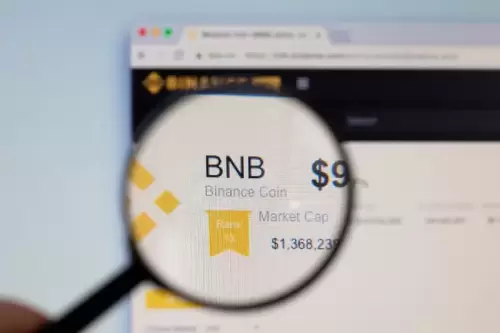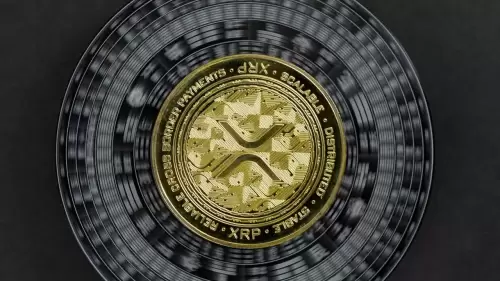 |
|
 |
|
 |
|
 |
|
 |
|
 |
|
 |
|
 |
|
 |
|
 |
|
 |
|
 |
|
 |
|
 |
|
 |
|
加密貨幣新聞文章
How to Avoid High Gas Fees: Transaction Simulation Can Help Keep Crypto Novices Informed
2025/01/08 06:00

Nodes in a network validate blockchain transactions and earn crypto in the form of fees, which serves as an incentive for them to process these transactions. When there are more transactions than usual on a blockchain, users compete to achieve higher processing speeds, driving up fees. This phenomenon is often observed during periods when a particular cryptocurrency experiences a price increase. As more users tend to move their assets around during these times, the volume of transactions increases, leading to higher fees.
Similarly, a high demand for a particular token corresponds with increased fees. For instance, when a lot of hype surrounds a project, the fees tend to be higher. During the spring of 2023, Bitcoin transaction fees were relatively high due to the popularity of the Bitcoin-based protocol BRC-20.
Users’ options to avoid high costsOne option to avoid high costs is to wait for fees to go down before sending cryptocurrency. However, this approach may not be feasible if you want to send it quickly. Fees can also be slightly lower during slow hours in leading markets, like nighttime in the US.
If a user is sending crypto to another exchange, they can exchange it for an asset like Ripple or Litecoin, whose fees tend to be lower. Then, they swap it back to their preferred asset on the other exchange. However, they’ll still be charged buying and selling fees.
A transaction simulation is an excellent way to predict fees, help keep crypto novices informed, and prevent mistakes. The simulation feature of Ambire Wallet, an open-source smart wallet that uses account abstraction, informs users of the effect of a transaction on their balances before they sign off on it. In addition to providing all the features and functions available from widely adopted solutions like Metamask, Ambire offers account recovery, prepayment of gas fees to avoid spikes, and transaction batching. It’s more affordable to send one large transaction instead of a few small ones. Blockchain activity determines the costs, not the amount of crypto you’re sending, so you’d pay the same fee for a small and a large transaction value. Ambire Wallet users combine transactions and broadcast them together, which saves both time and money.
The anatomy of transaction simulationAmbire greatly alleviates the complexity of transaction simulation. The intricate process starts with defining input parameters and ends with assessing transaction outcomes. There are several critical stages, each contributing to the reliability and accuracy of the simulation results.
A series of input parameters defines the transaction’s behavior and features. These parameters include sender address, transaction type, receiver address, gas price and limit, and other relevant attributes. Users customize the simulation to accurately reflect objectives and scenarios, but not without meticulously defining these parameters. After defining them, validation procedures are performed to ensure the transaction’s integrity and feasibility. Validation involves verifying address authenticity and evaluating the parameters’ compliance with preset criteria.
Following validation, the simulation prepares the blockchain environment based on current data and system configuration. This includes retrieving relevant information, including, but not limited to, contract codes, account balances, and gas, which measures the computational resources consumed while the simulated transaction is being executed.
Gas estimation involves evaluating the consumption of separate transaction elements and operations. Memory usage, opcode cost, and storage access are considered to accurately estimate the total gas required to execute the transaction. This determines the gas fees associated with the transaction.
Finally, the transaction simulation executes the operations entered in the input parameters. This stage involves simulating fund transfers, executing smart contract functions, and updating contract storage according to predetermined transaction logic. The simulation tracks each operation’s gas consumption during execution, monitoring the use of computational resources throughout the process. Tracking gas use makes it possible to assess how efficient transaction operations are and identify potential issues that may impact performance.
The simulation ends with an evaluation of transaction results, specifically the cost and integrity of the transaction. The evaluation involves verifying the completion of transaction operations, checking for errors, and examining the ensuing alterations to the blockchain state.
Simulations empower users to gauge the effectiveness of the entire process and attain valuable insights into the transaction’s impact on their finances, investment, and the whole blockchain.
Transaction simulation reduces riskEven novices know that you can’t reverse a blockchain transaction. Once a user signs a transaction, they cannot change or undo it. Simulation lets them predict potential issues or consequences, greatly reducing the risk of irreparable errors. You can simulate swaps, trades, or liquidity provisions in DeFi interactions to make sure they won’t lead to unexpected losses ensuing from non-optimal trade execution or slippage.
Ethereum transactions can incur substantial gas fees depending on their complexity and the degree of network congestion at any given time. Simulating transactions provides an estimate of the gas required, preventing users from underpaying, which can lead to stuck or failed transactions. Overpaying is equally undesirable, as excessive gas fees inflate transaction costs needlessly. By providing accurate gas estimates, simulation makes it possible to set the proper gas limits and keep expenses in check.
The outcomes of blockchain transactions aren’t immediately apparent, especially
免責聲明:info@kdj.com
所提供的資訊並非交易建議。 kDJ.com對任何基於本文提供的資訊進行的投資不承擔任何責任。加密貨幣波動性較大,建議您充分研究後謹慎投資!
如果您認為本網站使用的內容侵犯了您的版權,請立即聯絡我們(info@kdj.com),我們將及時刪除。
-

-

-

- 區塊鏈活動和令牌解鎖:2025年7月的加密貨幣十字路口
- 2025-07-06 14:35:13
- 2025年7月:區塊鏈的關鍵月份,將全球事件與令牌重大解鎖融為一體。了解導航市場趨勢的見解。
-

- 特朗普的加密財富:從成員到數十億美元 - 紐約的觀點
- 2025-07-06 14:50:13
- 探索唐納德·特朗普(Donald Trump)令人驚訝的加密貨幣及其對淨資產的影響。前總統是加密王嗎?
-

-

- 比特幣,稅收和基金經理:在紐約市導航加密迷宮
- 2025-07-06 12:50:14
- 探索比特幣稅收和基金經理觀點的複雜性。政府有權獲得稅收比特幣嗎?投資時基金經理面臨哪些障礙?
-

-

- 債務上限,特朗普和比特幣的吸引力:紐約財政政策的一分鐘
- 2025-07-06 12:30:13
- 特朗普的“一個大型賬單”及其對債務上限的影響,以及為什麼比特幣現在看起來有點不錯。
-

- 阻止預售:瞄准在擁擠的加密貨幣空間中獲得高回報
- 2025-07-06 14:10:13
- 探索Blockdag的預售,潛在的回報,以及它如何與其他趨勢加密貨幣相抵觸,以尋求高ROI。





























































